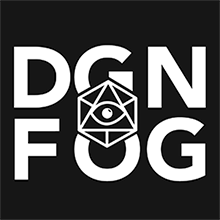In the days that followed, the city fed itself to headlines. Talk radio ran hot; tabloids screamed; the evening news looped the broken window and the stretcher. A detective had survived a serial killer because a fox in a cape had come through glass like a decision. The Bloodletter—Callum Campbell—had a name now, and the evidence that followed made the case look open, shut, and airtight.
The chain held. The anonymous photos that hit Benoit’s inbox—maps, binders, the tool wall—became a warrant; the warrant opened B-17; B-17 spilled ledgers, blades, trophies, a red constellation of pins that matched the dead. Property tags bloomed. Forensics had a feast and moved carefully: prints on handles, trace in sheath seams, fibres in the storage dust, signatures of bleach layered over the biology it couldn’t quite erase. The butcher’s careful life had left careful lines. Now those lines connected.
People argued about what justice meant for the Butcher of Bloor. Some wanted the old myth—throw him in a hole and forget him. Call-in shows said max and meant vengeance. Columnists said process and watched their mail turn ugly. Crown counsel said fitness to stand and criminal responsibility—the phrases that keep a system from satisfying its rage in one fast meal.
Campbell’s lawyers did their work. They got him remanded to Erie House for a secure psychiatric assessment pending trial, arguing that a facility designed to hold specials was the only place in Ontario equipped to keep him, and everyone else, intact. The order held. Steel and protocol swallowed him. Most people agreed it was the same thing as prison, for now. Others thought asylum sounded like a trick door—too soft a word for what he’d done.
Erie House didn’t use soft words. The intake log was brisk and cold. Cameras. Double doors. A heavy, humming lock. Dr. White’s signature on the evaluation schedule, printed letters neat enough to look kind. The file name read Campbell, Callum — Forensic Observation / High Risk, and there was nothing poetic anywhere on the page.
The butcher shop on Bloor put up hand-lettered paper: Closed Until Further Notice. The young woman from behind the counter left a bouquet at the corner where one of the red pins had lived; she stood a long minute and didn’t say anything. Sal at the deli shook his head, said you can never know who the monsters are until they show their fangs, and sent Arthur out with two sandwiches and a frown.
Benoit healed by inches. Stitches along her hairline, a brace on the right wrist, the throwing knife’s puncture mapped in purple and yellow. She gave a clipped statement on the courthouse steps—no flourishes, no mythology. “I’m grateful to be breathing,” she said. “The rest is evidence.” She went back inside and signed three more forms because that’s what surviving buys you: more work.
Council held a hearing about “vigilantes and public order.” Doctor Lexington wore the same tidy grey and talked about clusters, catalysts, and risk. A councillor called Vulpes a menace; another called her a symptom. Liv didn’t attend. She had a desk, a caseload, and a city full of families who’d been waiting to sleep.
In the papers, the fox divided the city the way a lightning strike divides a tree. A tabloid demanded: MASKED MENACE OR MAKESHIFT HERO? A broadsheet ran a profile on “the woman some say saved a detective,” built entirely from anonymous quotes and a blurry rooftop photo. The editorial called for standards and accountability and then, in the last paragraph, admitted a quiet debt.
None of it touched the kitchen where the glass still worked itself out of the grout. Benoit bought a new peephole and a heavier chain. She kept the cast-iron. When she rinsed it the first time after, the bacon fat came off like old varnish. She dried it with care and set it back on its hook, the way you put something important back where it belongs.
The Crown filed counts that read like the spine of a bad book: multiple homicide, attempted murder, aggravated assault, unlawful confinement, offences against a corpse, weapons prohibitions shattered into glittering pieces. There would be prelims and voir dires and months of careful war in rooms with bad coffee. If a jury ever heard the case, they’d hear about a storage unit in the west end and a woman who refused to shut her eyes.
In Guelph, a few names got said out loud for the first time in years, and the town did what small towns do: it talked quietly and remembered more than it admitted. A parish secretary spelled Campbell on the phone to a reporter and then told her husband she hoped the fox never had to come down their road.
Arthur MacLeod brought Coraline a coffee and a look that asked nothing and knew too much. “You’re not sleeping,” he said, and she said, “plenty time to sleep when I’m dead” and he told her to take a personal day or he was going to make her. On Bloor, the sign at the butcher came down and a realtor’s placard went up. That was a kind of justice too: the ordinary turning its face to the sun again, even if the shadow still knew where the door had been.
At Erie House, a nurse wrote that Campbell didn’t scream. He breathed like a man counting fence posts and watched the glass in the observation slot the way a butcher watches a scale. Sometimes, late, he flexed his hands like he was still measuring cuts. The medication schedule was neat. The restraints schedule was neater. The notes never said evil. They said pattern, affect, insight: limited, risk: high.
When reporters asked Benoit if she’d call the fox a hero, she said, “I call her a witness,” and let the question pass by like a bus she didn’t need. When they asked if she’d do anything differently, she looked at the window and said, “I’d buy better blinds,” and the room laughed in the careful way rooms do when the thing they mean is thank you for not dying.
And the city—Toronto, which had been holding its breath—exhaled a little. Not all the way. Not with Psychedelic still a line item under ongoing risk, not with Council still arguing about masks, not with the next storm gesturing from the horizon like it had a name already. But enough.
On a roof not far from Queen Street, a figure in orange and black watched the streetcars hiss and the pigeons argue with crows. The cape that had baffled a blade lifted and fell with the mild wind off the lake. Somewhere below, a deli sign clicked off. Somewhere to the west, a heavy door slid shut on a man who had finally met his end and didn’t know it yet.
The city’s heartbeat settled to its familiar, restless time.
For tonight, the fox kept the watch. Tomorrow, the work would begin again because her fight was far from over.
---
Erie House Forensic Psychiatric Assessment
Patient: Campbell, Callum (a.k.a. “Bloodletter”)
DOB: [redacted] MRN: [redacted]
Date of assessment: [redacted], 1999
Location: Erie House, Black’s Isle, Lake Erie (Secure Forensic Intake)
Evaluator: Ashton White, MD, FRCPC (Psychiatry), Senior Psychiatrist, Erie House
Referral question
Court-ordered assessment to determine: (1) fitness to stand trial; (2) criminal responsibility at the material time; and (3) current risk and appropriate level of secure management pending trial.
Sources of information
- Police occurrence reports, scene photographs, and property logs (including storage unit contents B-17).
- EMS/ED records documenting injuries sustained during arrest.
- Interviews with investigating officers and selected witness summaries (detective victim, civilian).
- Two direct clinical interviews with Mr. Campbell (total 2h 15m), repeated brief nursing observations on intake ward.
- Collateral employment history (butchery training/certification), school and community background where available.
- Psychological testing (see below).
Alleged index offences (brief summary)
Patterned homicides and disappearances over multiple months in Toronto with earlier suspected activity in Wellington/Guelph region. Conduct features include: instrumentality of edged weapons; anatomical precision consistent with trained butchery; post-offence staging/cleaning (bleach); geographic planning (map with pins); secure off-site “workshop” containing tools, binders, clippings, and booby-trap devices; fixation files on the vigilante “Vulpes” and a serving police detective; recent attempted homicide of Detective O. Benoit inside her residence.
Pertinent background
- Development/family: No documented early neglect or abuse. Stable two-parent household; rural upbringing; animal slaughter experience via family work and later formal butcher certification.
- Juvenile conduct: Historical animal cruelty incident (cat mutilation) and subsequent peer retaliation (assault). Reports of early fascination with cutting implements.
- Education/work: Completed secondary school; subsequently employed in meat processing and as a butcher. Supervisors described him as quiet, controlled, “meticulous.”
- Medical/substance: No major medical illness recorded prior to arrest. Intake toxicology negative.
- Psychiatric history: No prior formal psychiatric diagnosis or treatment known. No prior psychotic symptoms, mood disorder, or anxiety treatment documented.
- Legal: No serious adult convictions on file before the current matters (records incomplete).
Behavioural observations / Mental status
- Appearance & behaviour: Tall, muscular male, guarded but composed. Tolerates pain with minimal outward reactivity. Good grooming; symmetrical motor use (ambidextrous).
- Attitude: Coolly cooperative when it serves his purposes; otherwise withholding. Tests interpersonal boundaries with irony and small provocations.
- Speech: Normal rate/volume; concrete and concise.
- Mood/Affect: Describes mood as “fine.” Affect shallow, constricted range; congruent with content when discussing logistics, incongruent when discussing victims (flat, faint amusement).
- Thought process: Linear and organized. No formal thought disorder.
- Thought content: No delusions or hallucinations elicited. Prominent grandiose and sadistic ideation framed as “craft” and “art.” Repeated contempt for “softness” and “rules.”
- Cognition: Oriented ×3. Intact attention, memory, abstraction. Understands court roles and processes; can consult with counsel.
- Insight/Judgment: Insight into wrongfulness is tactical (“I know what the rules say”); moral insight absent. Judgment oriented to self-gratification, domination, and evasion.
Psychological testing (screening battery)
- PCL-R (Psychopathy Checklist–Revised): Score consistent with high psychopathy range, with elevations on interpersonal/affective items (glibness, shallow affect, lack of empathy/remorse) and lifestyle/antisocial items (parasitic orientation low; strategic instrumental violence high).
- HCR-20 (Historical/Clinical/Risk): Numerous historical risk factors (early cruelty to animals, past violence, employment that normalizes controlled cutting, weapon familiarity), current clinical factors (lack of insight, negative attitudes, active violent ideation), and risk-management concerns (escape planning, targeted hostility toward specific individuals).
- MMPI-2 (abbreviated): Elevations consistent with callousness, externalization of blame; impression-management present.
Diagnostic formulation (DSM-IV multi-axial)
- Axis I: No primary psychotic or mood disorder. Consider Paraphilia NOS vs. non-sexual sadism traits (insufficient evidence for sexual component).
- Axis II: Antisocial Personality Disorder; Narcissistic traits; psychopathic personality features (per PCL-R).
- Axis III: Acute trauma from arrest (GSW right shoulder; shattered right patella; lacerations; soft-tissue injury left calf); high pain tolerance.
- Axis IV: Severe legal stressors; custodial placement.
- Axis V: GAF not a useful index for dangerousness; functional capacities intact for instrumental planning.
Opinions
1) Fitness to stand trial: Fit. Mr. Campbell understands the nature/purpose of proceedings and can instruct counsel. There is no cognitive or psychiatric impairment that would impede meaningful participation.
2) Criminal responsibility at the material time: No evidence of a mental disorder that would render him incapable of appreciating the nature/quality of his acts or of knowing they were wrong. Behaviour was planned, instrumental, concealed, and adapted to avoid detection. In my opinion, he does not meet criteria for Not Criminally Responsible (NCRMD).
3) Risk assessment & management:
- Risk of serious interpersonal violence: Extremely high if at liberty. The violence is predatory, ritualized, and ego-syntonic. Target expansion to law enforcement is documented. Sadistic themes, trophy-keeping/scrapbooks, and booby-traps indicate persistence and planning.
- Institutional risk: Elevated risk of staff intimidation, manipulation, and escape planning; high tolerance for pain increases seclusion/self-harm management complexity.
- Victim-specific risk: Persistent fixation on the vigilante “Vulpes” and the involved detective suggests continuing ideation if given access to communication channels.
Recommended controls (pending trial):
- Highest secure classification; constant video monitoring.
- Two-officer escorts with two-point restraints; metal-detector and pat-down for all movements.
- No access to metal objects; cell and common-area searches at irregular intervals.
- Strict mail/telephone review; no media access that allows coded messaging or notoriety reinforcement.
- Psychological treatment limited to behavioural management and offence-mapping; prognosis for empathic or insight-oriented therapy is poor.
- Regular multidisciplinary risk reviews; coordinate with Crown regarding any communications that could affect witnesses.
Prognosis: Violent recidivism risk remains high over time. Motivation is intrinsic (gratification from domination/“craft”), not reactive. Absent sustained, externally imposed control, risk does not meaningfully diminish.
Signed,
Ashton White, MD, FRCPC
Senior Psychiatrist, Erie House (Forensic Services)
Personal thoughts (Confidential Addendum — not for disclosure without court order)
I am loath to use the word evil as a professional, but in a career of assessing super-villains and unwell “Specials,” I have never met someone who comes as close as Callum Campbell to that term. He has no traceable trauma; his family life was healthy; he shows no mental illness that provokes his actions. The frightening truth is that he is not the first—nor, I fear, the last—serial killer who harms because he wants to, because he enjoys it.
Men like him give me pause about the human mind and strain my belief that people are innately good, because I fear there may be no good in Callum Campbell. Even now, he smiles and taunts the police about victims he claims we will never find, as if it is a game—biding his time, soaking up the spotlight while he plans an escape, plans his next series of “art exhibits,” and, most of all, plans how to make the Vulpes pay in red ruin. To look into his eyes is to stare into a kind of void; the abyss of Callum Campbell’s soul feels inhuman, as if he were wrought from wrong at his very core.
I do not think he should remain here at Erie House. I have advised Dr. Weiss that he belongs in a maximum-security facility for the dangerously insane. I fear politics will see him remain. I do not say this lightly: Erie House exists to help. I do not think Callum Campbell—the Bloodletter—can be cured, only contained.







